Eivor Cosplay: Bracers and Hidden Blade

I’ve started a new project: creating a Cosplay of Eivor from Assassin’s Creed Valhalla and first up in this post I make the “hidden” blade and the bracers.
I’ve been a long-time fan of the Assassin’s Creed franchise and its latest instalment is Valhalla where you play a viking character trying to make a new life and settlement in England. This game has given me a lot of entertainment during lockdown and after experimenting with foam props making the daggers from Skyrim I thought I’d try some other new techniques.
Screenshots From the Game
Here is a screenshot of Eivor wearing the Berserker armour set (I’ve taken all of these screenshots directly from Assassin’s Creed Valhalla on ps4) - this is the one I used through the majority of the game so I decided to create this. As this is my first real cosplay project I’ve decided to go with “inspired by” instead of being 100% accurate to take some pressure off.

Here is a screenshot of the “hidden” blade Eivor uses on top of the bracer. I call it a “hidden” blade with the quotes because a weapon like this in these games is normally worn on the inside of the wrist hidden underneath clothes or armour and used for the assassinations (thus “Assassin’s” Creed) but in this game she (or he) wears it on the outside.
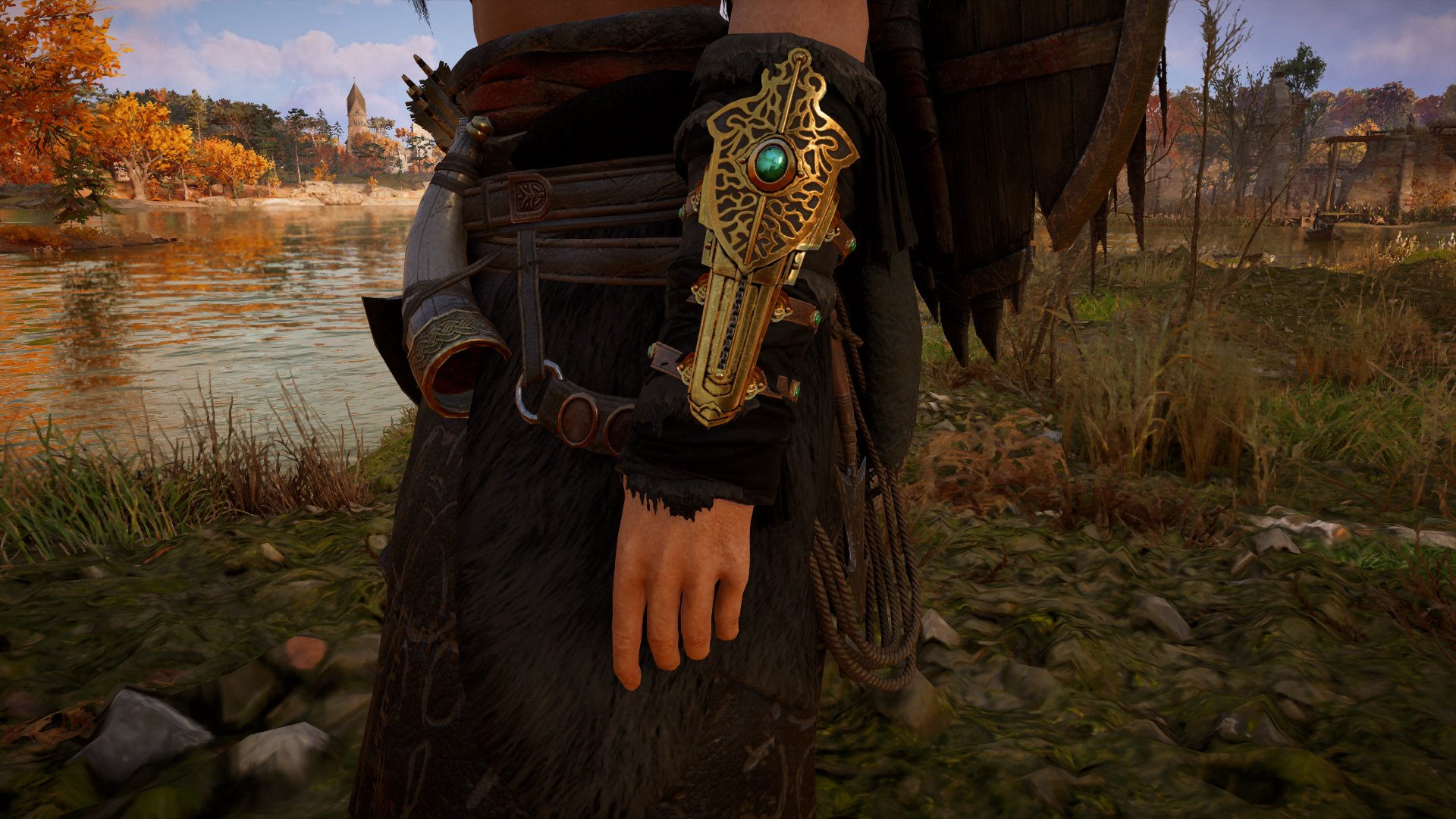
Finally here’s a screenshot of the bracer without being covered by the blade.
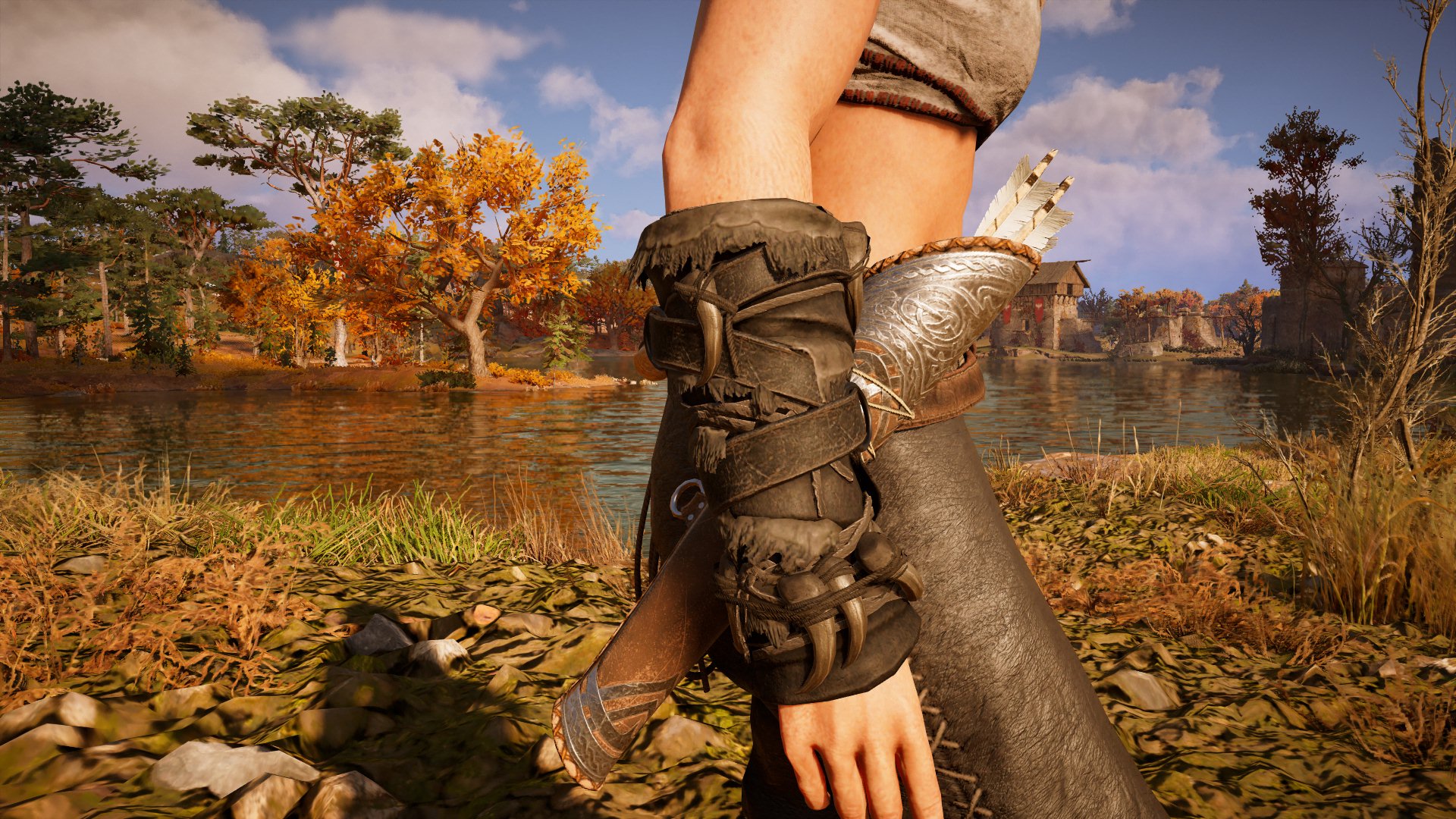
Hidden Blade
I started with the hidden blade detail. After playing with laser cutting the EVA foam making the Skyrim Daggers I thought this complicated design was the perfect application for laser cutting rather than trying to cut it out with a knife myself. So the first step was to trace over the design to get a line diagram I could send to the laser cutter.
Tracing the Design in Fusion 360
I chose to use Fusion 360 as it’s free for hobbyists. I should have documented this step as its own post as it took ages because I hadn’t used Fusion 360 before and was generally quite time consuming but I sort of got consumed and forgot to take the screenshots!
I first added the screenshot as a canvas in Fusion 360 and created a sketch tracing all the lines of one half of the design. I then mirrored the sketch around the vertical axis and made some minor modifications to each side (e.g. the broken piece on the top right hand side).

I modelled the other layers in Fusion 360 too to make sure I got the proportions right. I added these to other layers in Fusion 360 so they could be exported separately.
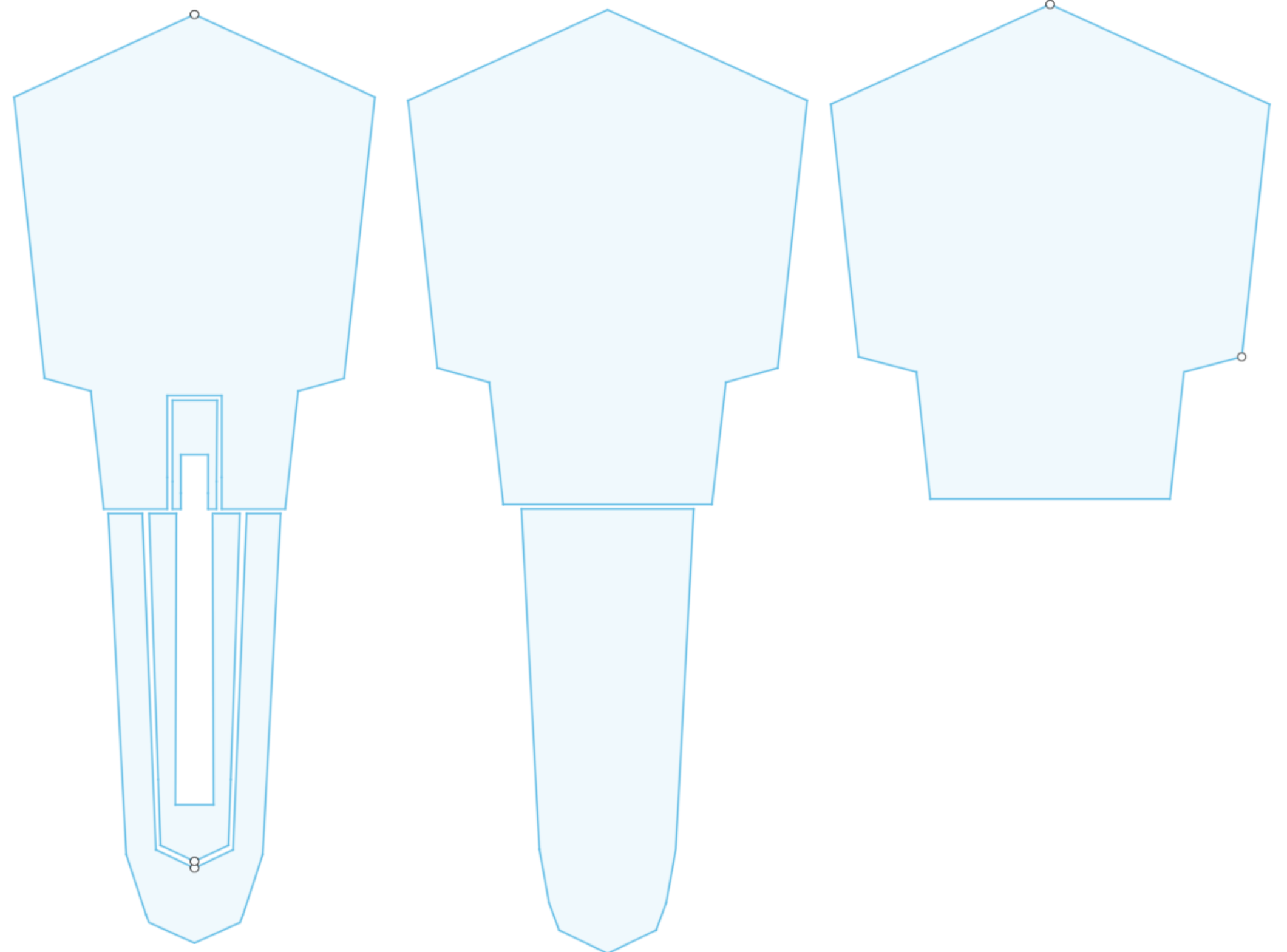
Here is the overall design (with the layers on top of each other) in Fusion 360.
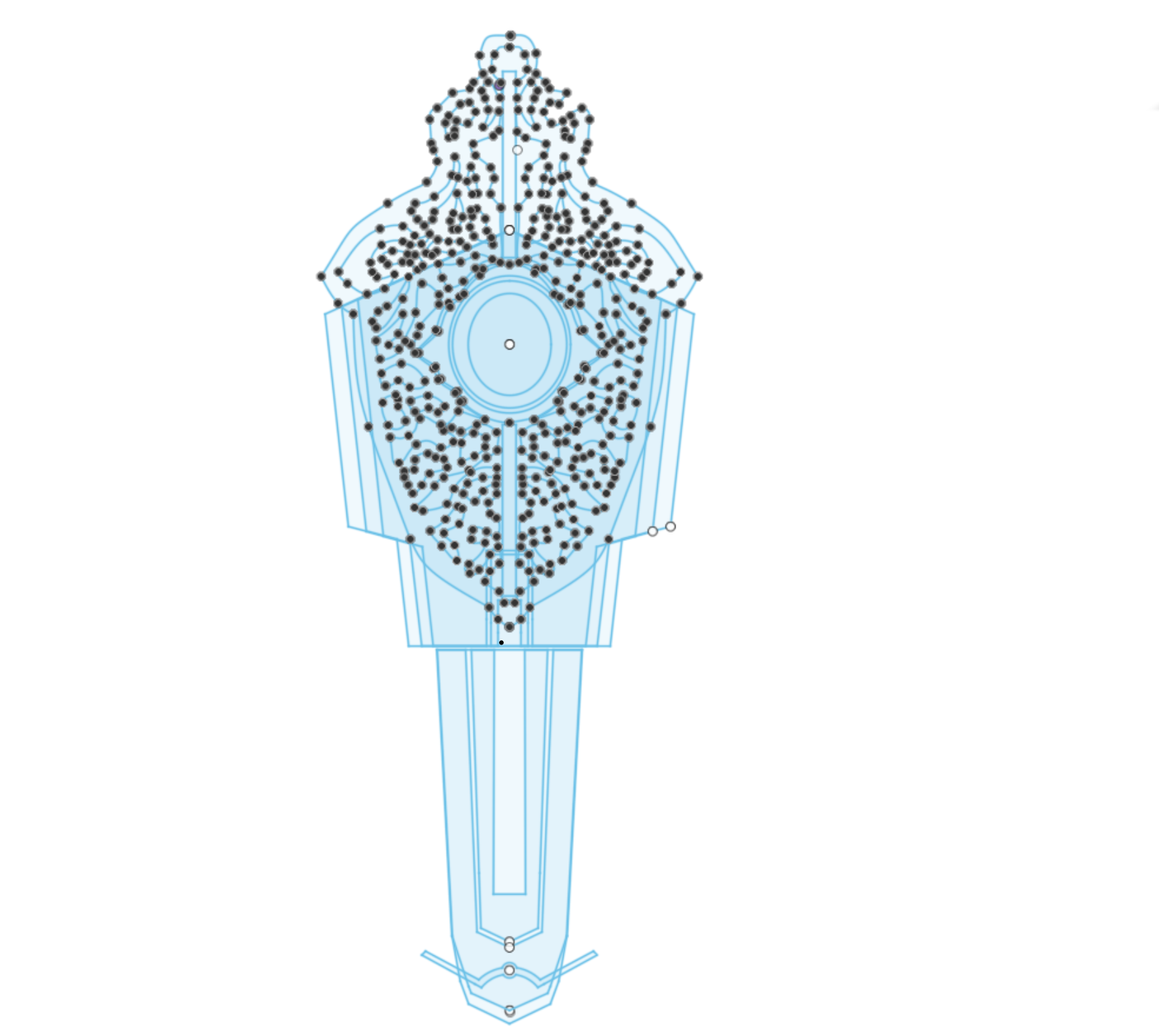
I then exported each layer as a .dxf file that is accepted by the laser cutter software by right-clicking on the sketch and choosing “Save as DXF”.
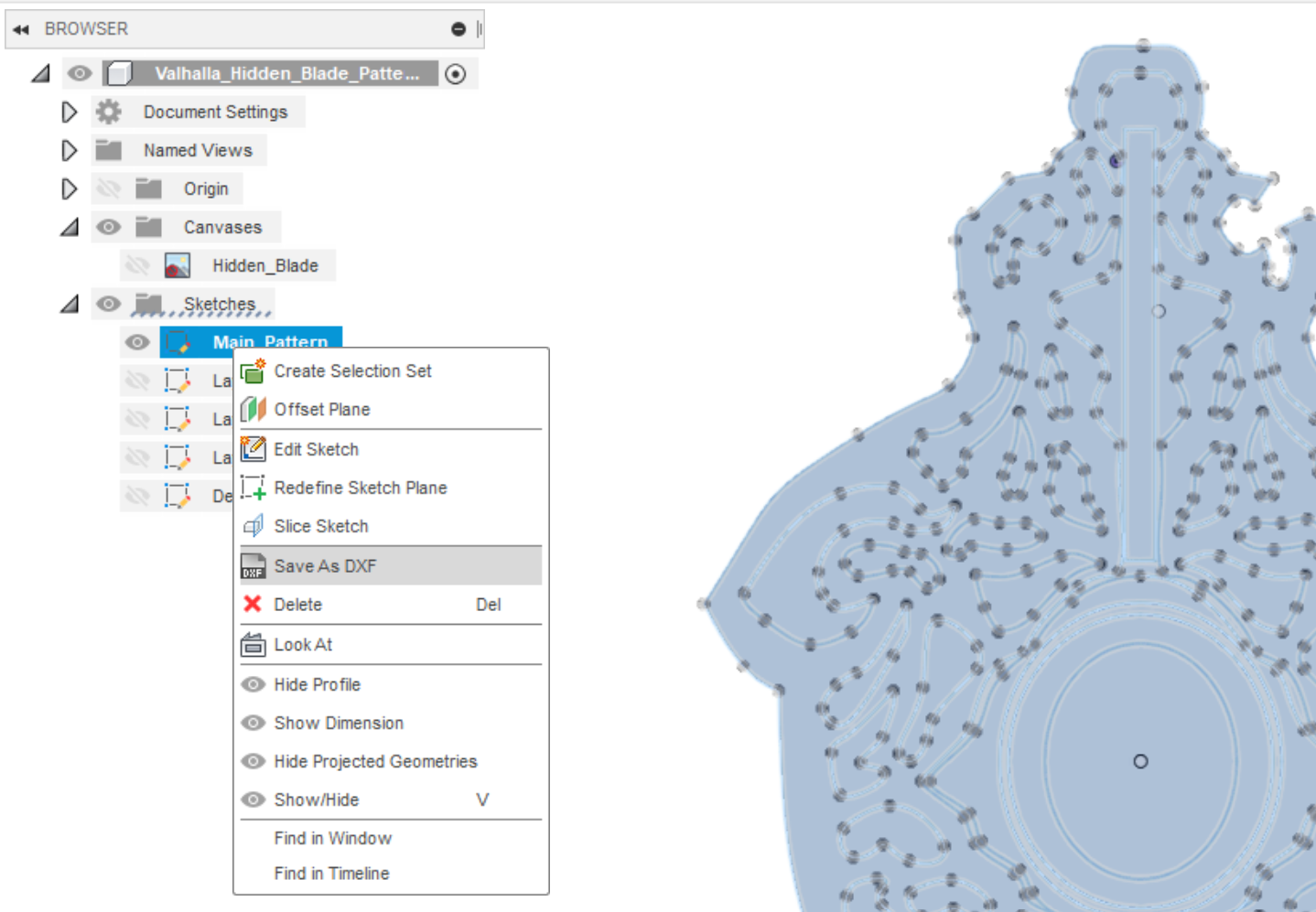
Laser Cutting
Armed with my design I did a few test cuts using thin scrap cardboard in the laser cutter to make sure I had the sizing right in proportion with my arm.

It was also good practise in setting up cuts - making sure I selected the inside layers to cut before the outside layers, etc.
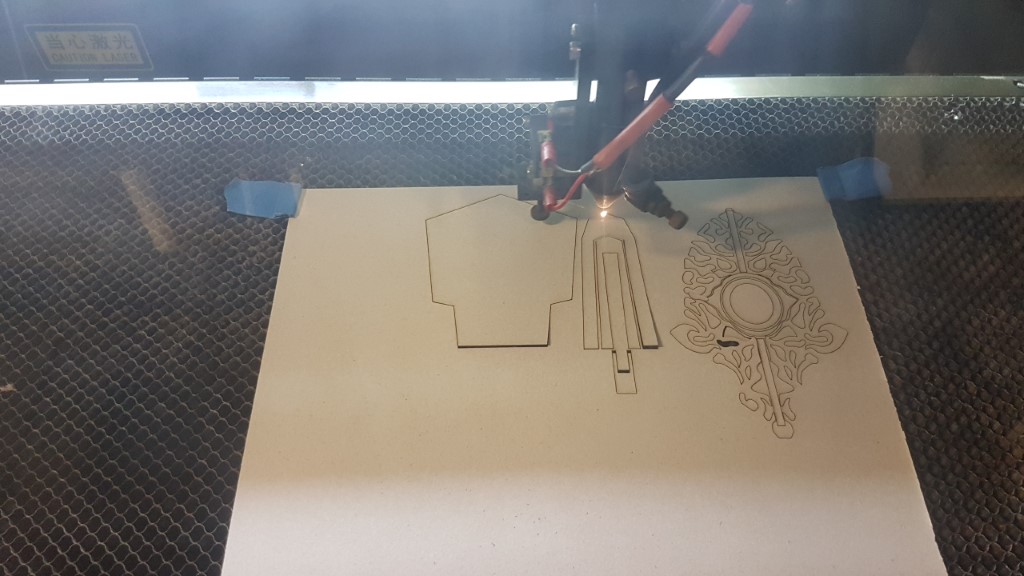
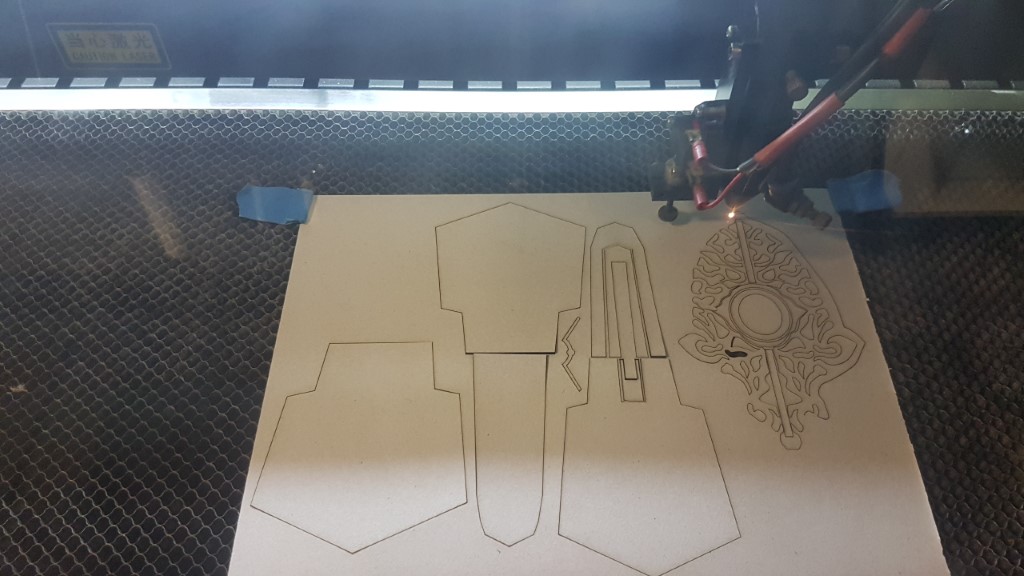
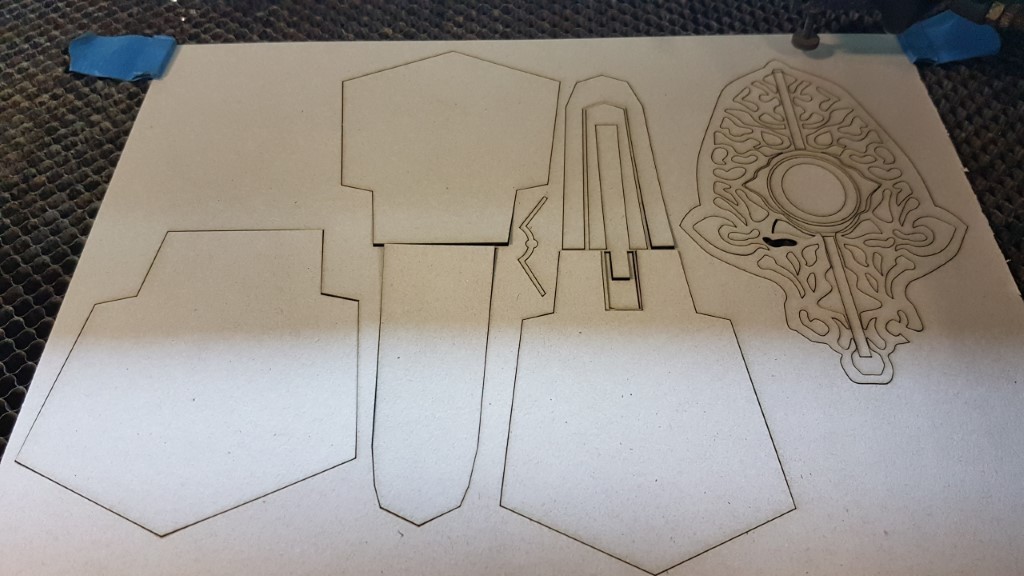
After a few test cuts and adjusting the files for scale slightly I was ready to make the final cut in EVA foam. I just had to adjust the material setting on the laser cutter but otherwise used the same settings as my final test cut.

Here is a closeup of the detail pieces laid out. I had to take care to keep all the pieces together in a snap lock bag while I cut the other pieces.
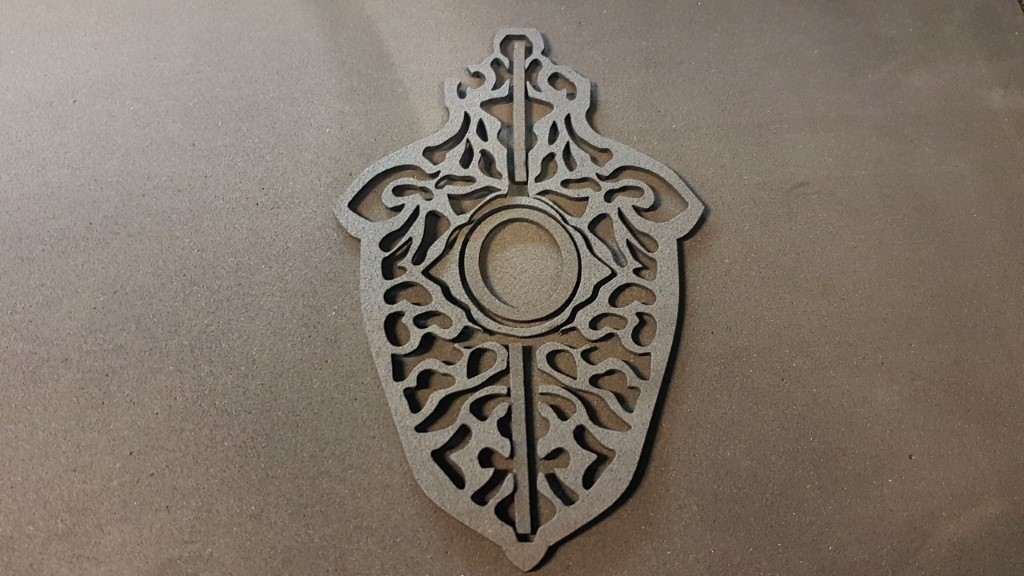
I cut the detail layer out of 3mm EVA foam and the other detail pieces from 6mm so they had to be another cut.
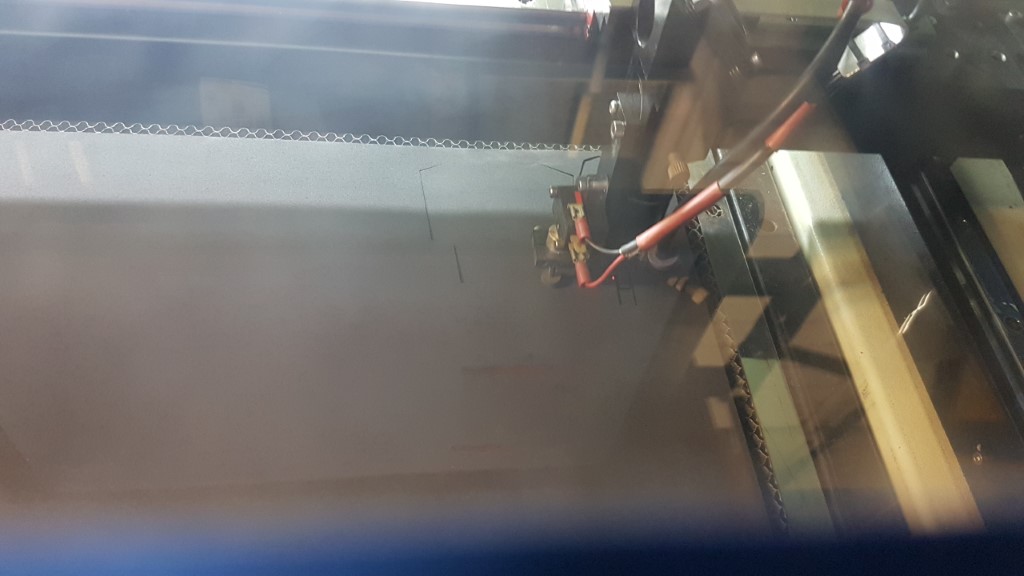
Here are all the hidden blade pieces laid out (pre-gluing).
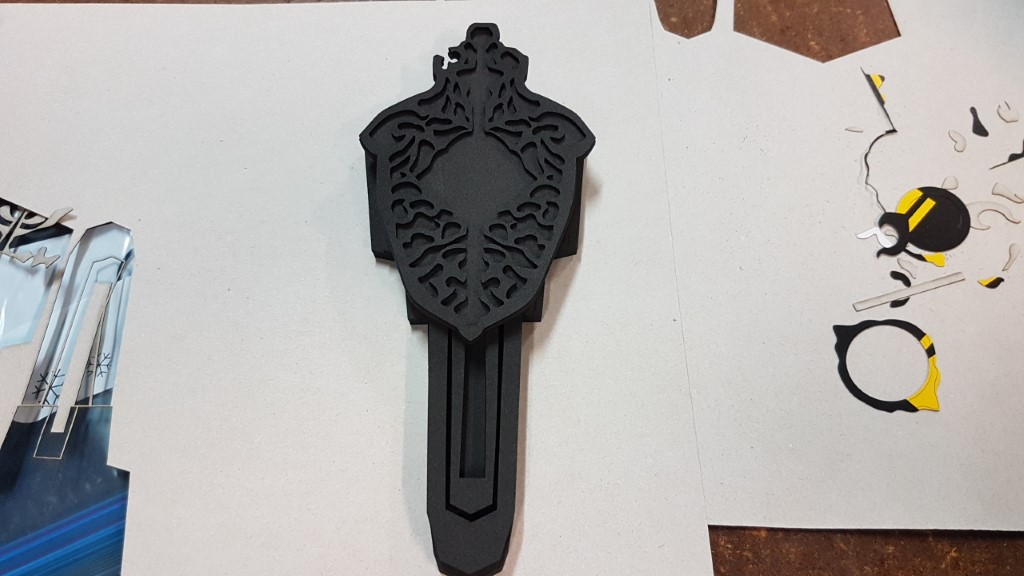
Assembly
I then glued all the pieces together using contact cement and primed it using plasti-dip just like I did for the Skyrim Daggers. I don’t have any in-progress pictures at this stage but I then cut a piece of chain and glued it on the top and bottom into the opening. Then I painted the outside with gold acrylic paint. Finally, I cut some strips of faux leather that would fit around my arm and attached them to some buckles I had using rivets. I finally glued the faux leather to the back of the hidden blade.
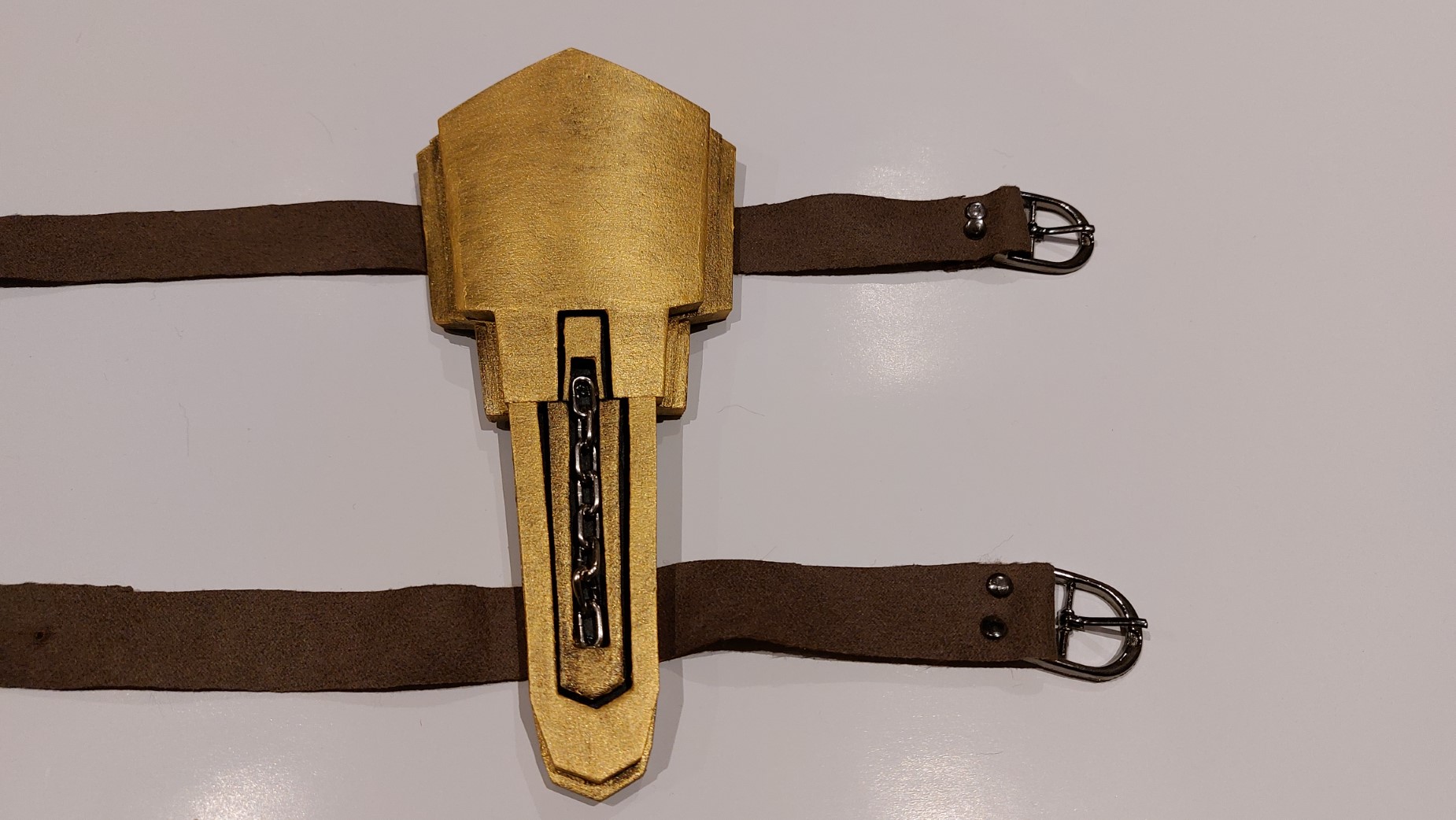
The final step is to attach the detail to the front of the blade. I’ve decided to leave off the gem at this stage and focus on the remainder of the costume, I might add a gem later.
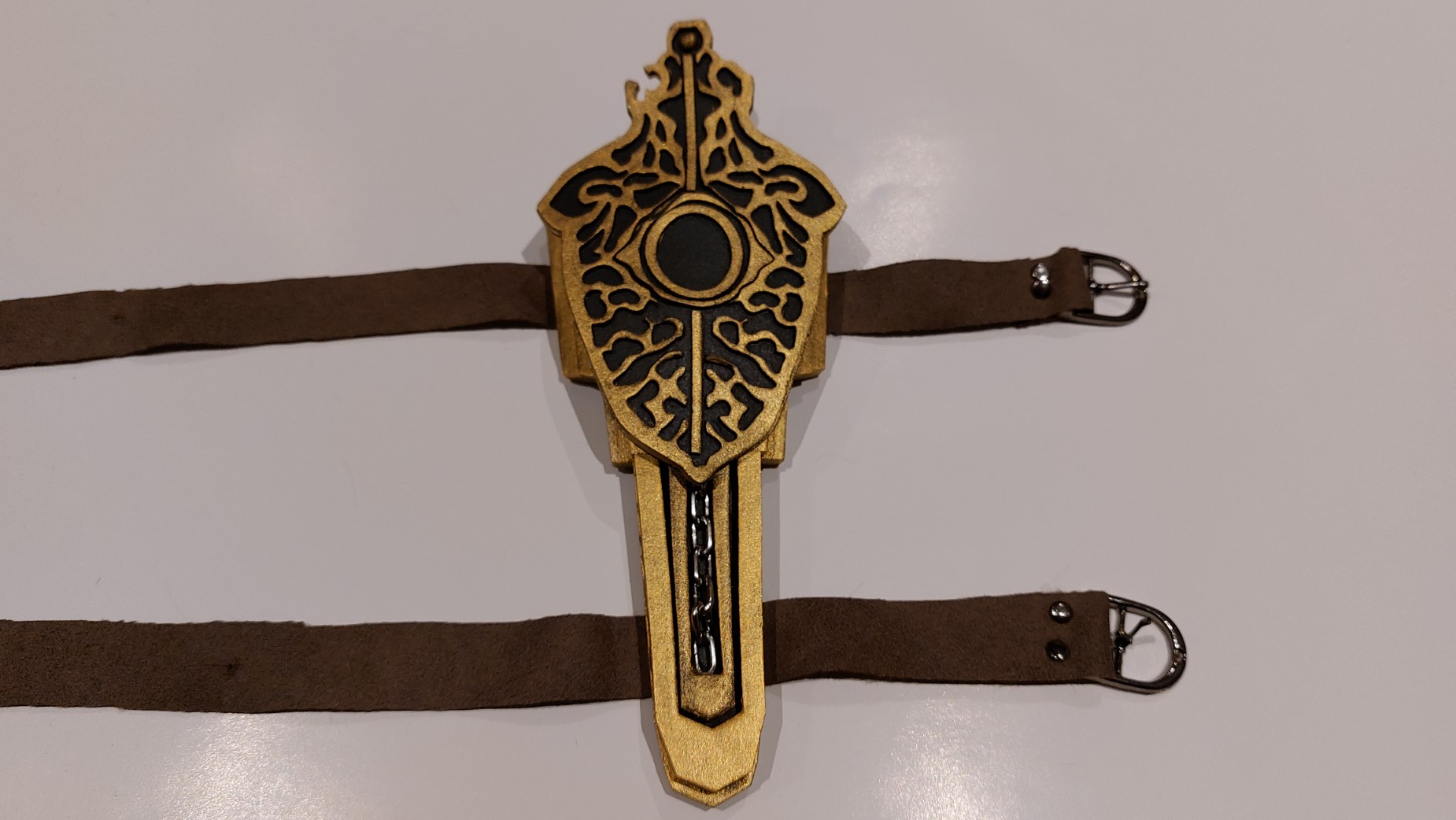
Bracer
After the hidden blade was done I could make the bracer to go underneath it. I cut another piece of faux leather and a piece of faux fur to make the bracer.
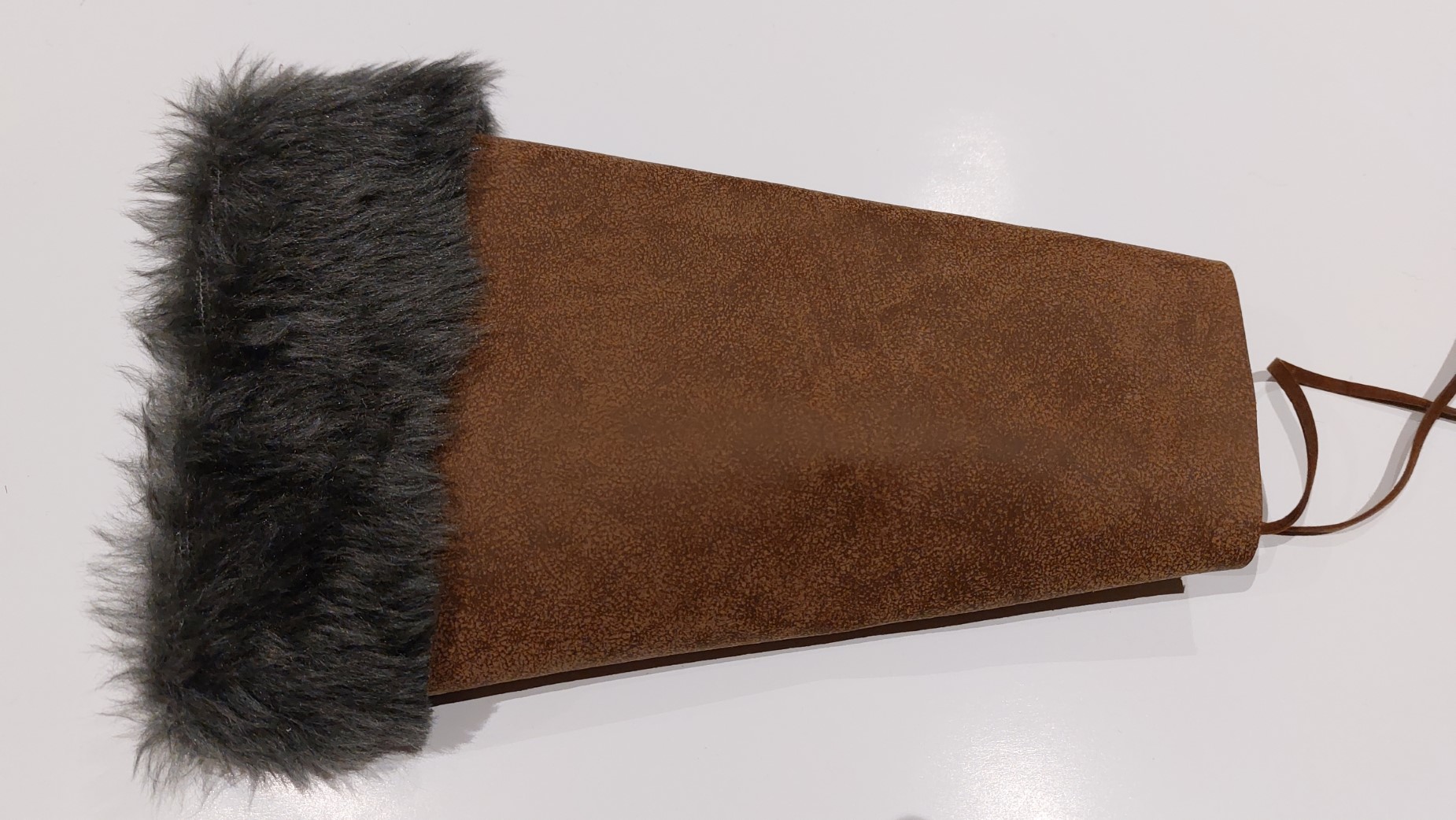
I joined the two sides together using more faux leather strips; I created holes using an awl, then I threaded the strips through a large-eyed needle and hand stitched the sides together. I cut the strips very long to use to wrap back around it later.
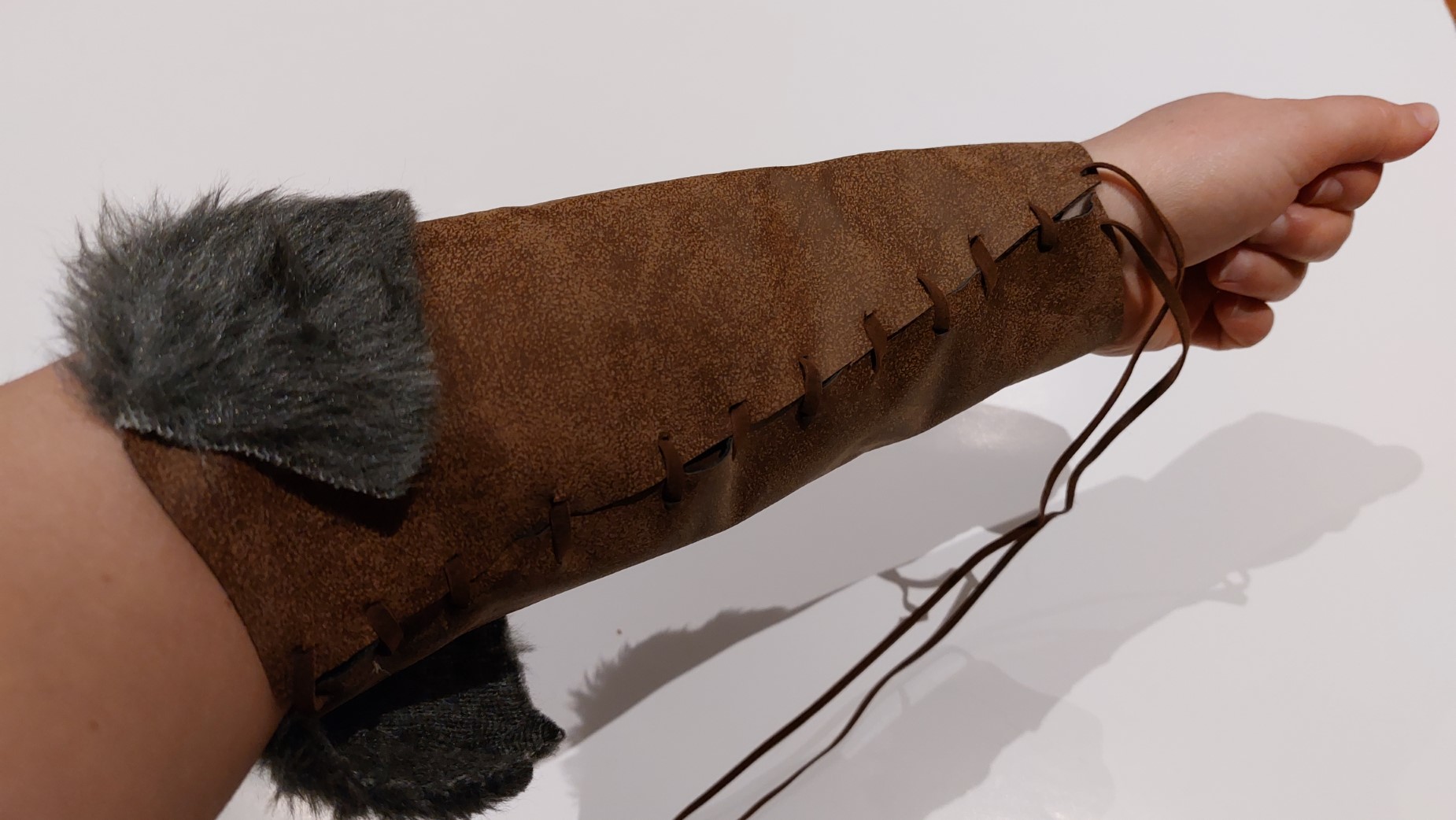
I sewed another piece of faux fur around a strip of faux leather to wind around the bracer for detail.
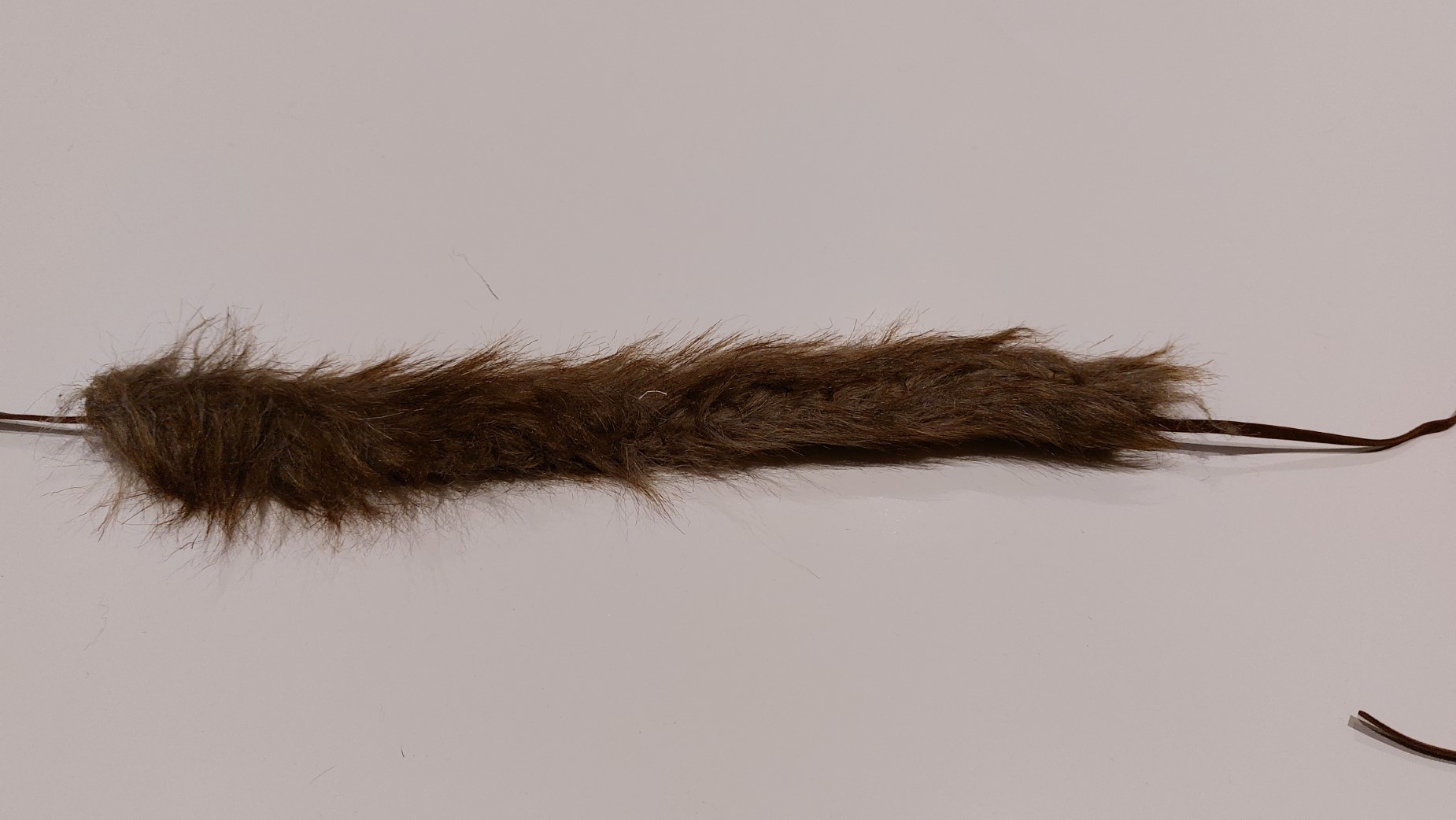
I cut more strips of faux leather and looped it through a square eyelet. I used rivets to join the two sides of the faux leather - this is the same technique I used on the buckle for the hidden blade.
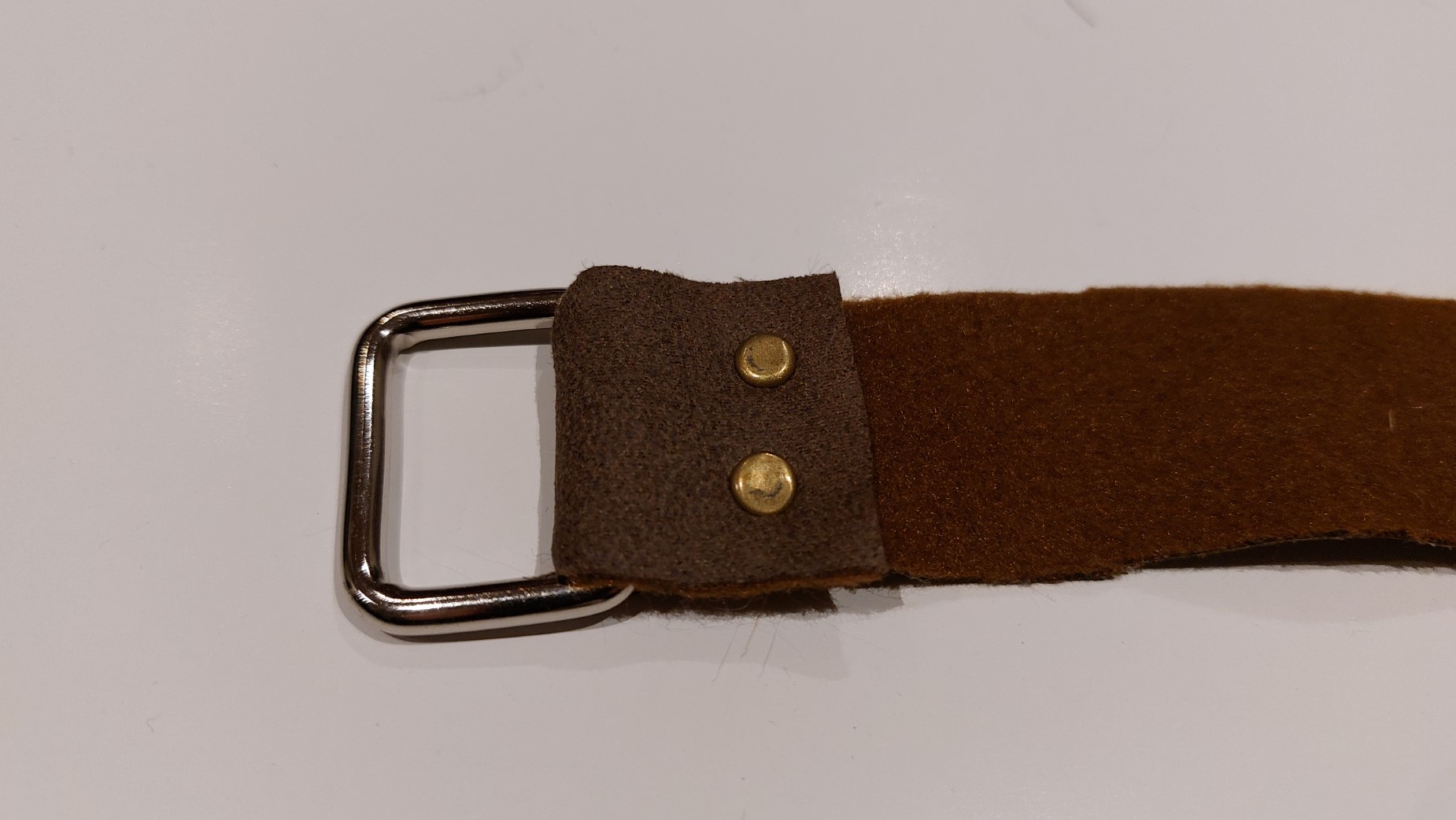
I wrapped this strip and the remainder of the cord from the base of the bracer around my arm to complete the bracers.
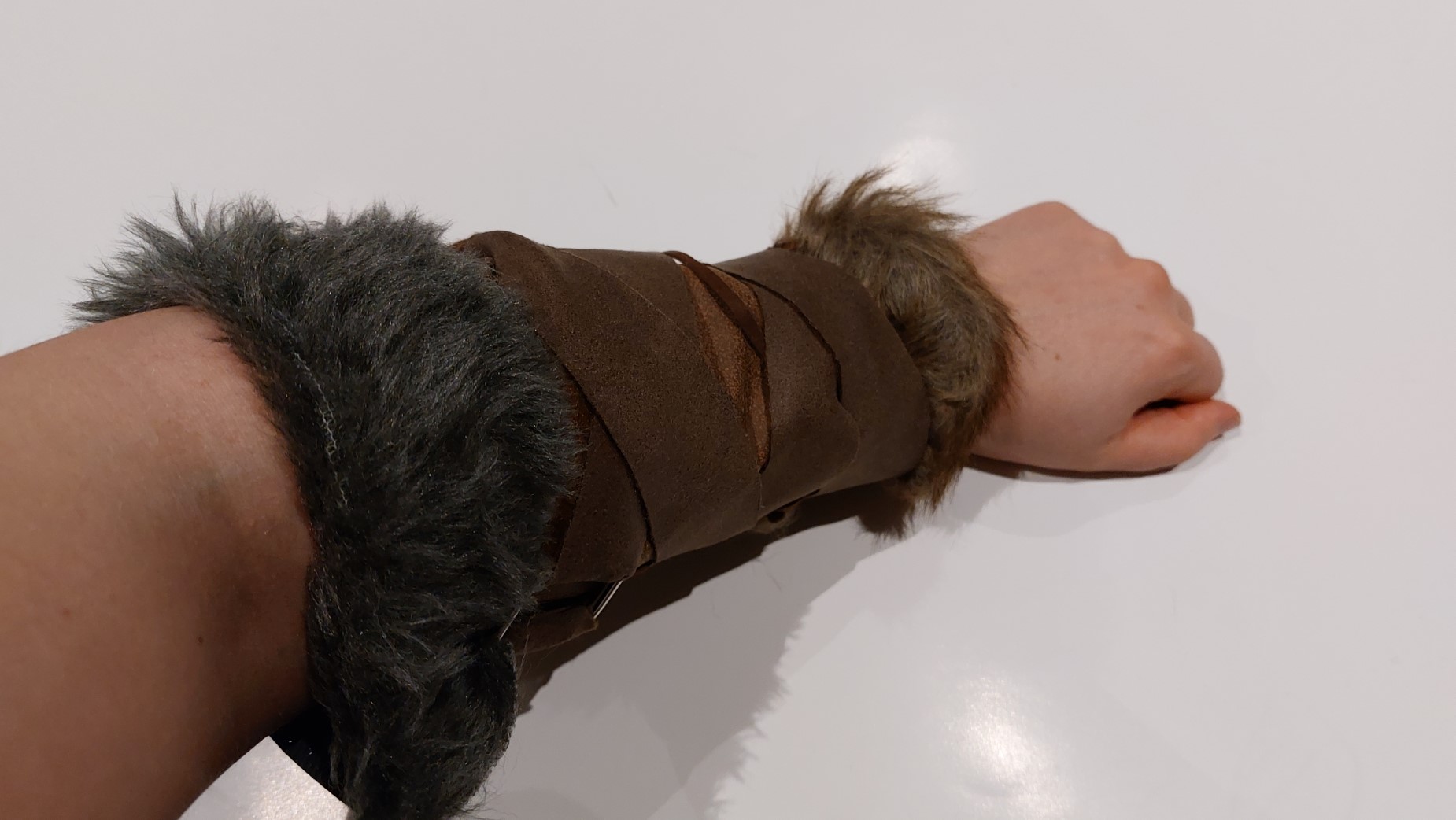
Finally I could add the hidden blade on top of the bracer. I’m quite happy how my first attempt turned out!
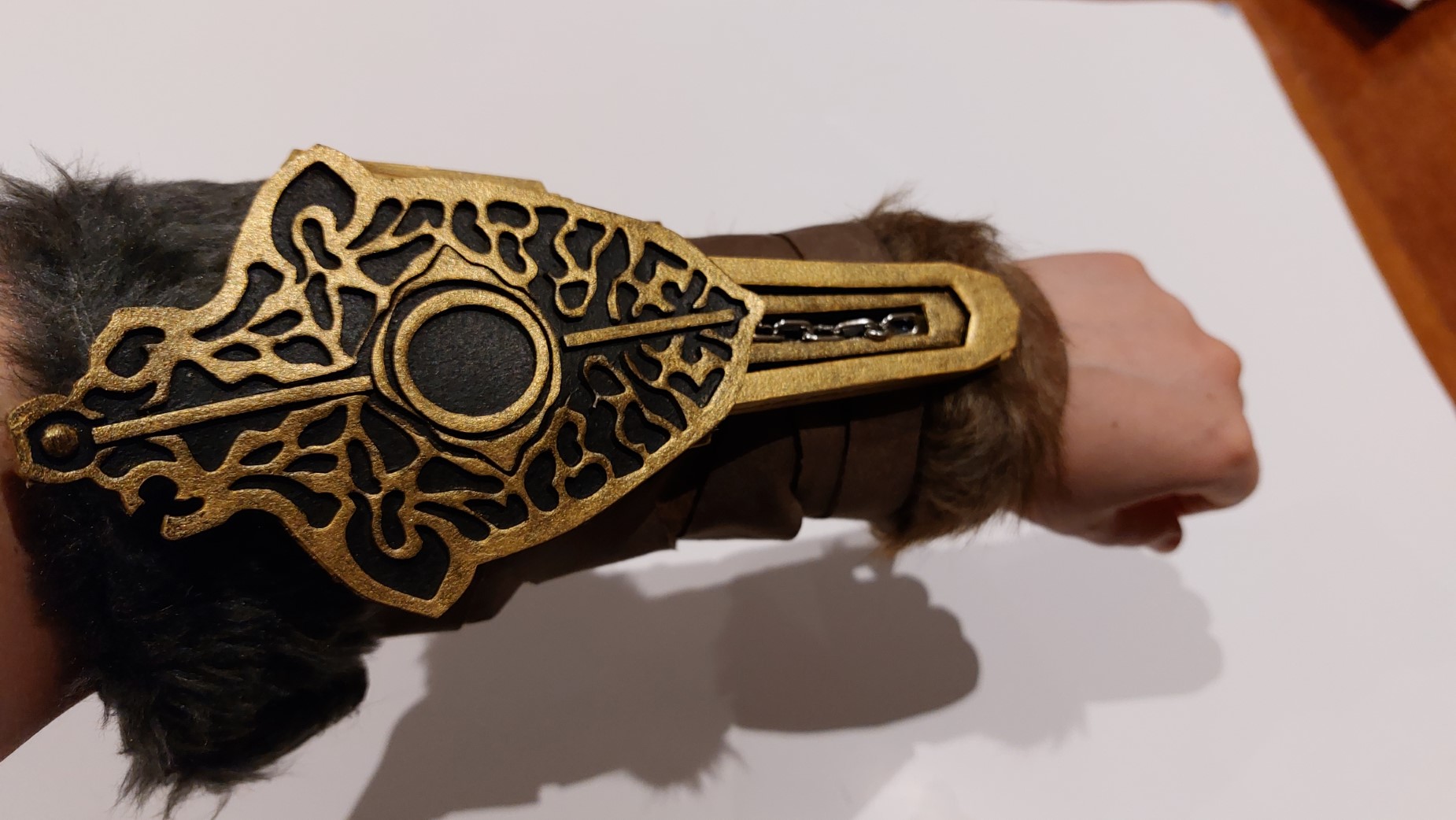
Finally here are all the pieces for both bracers - the second bracer is the same as the first but without the hidden blade on top.
